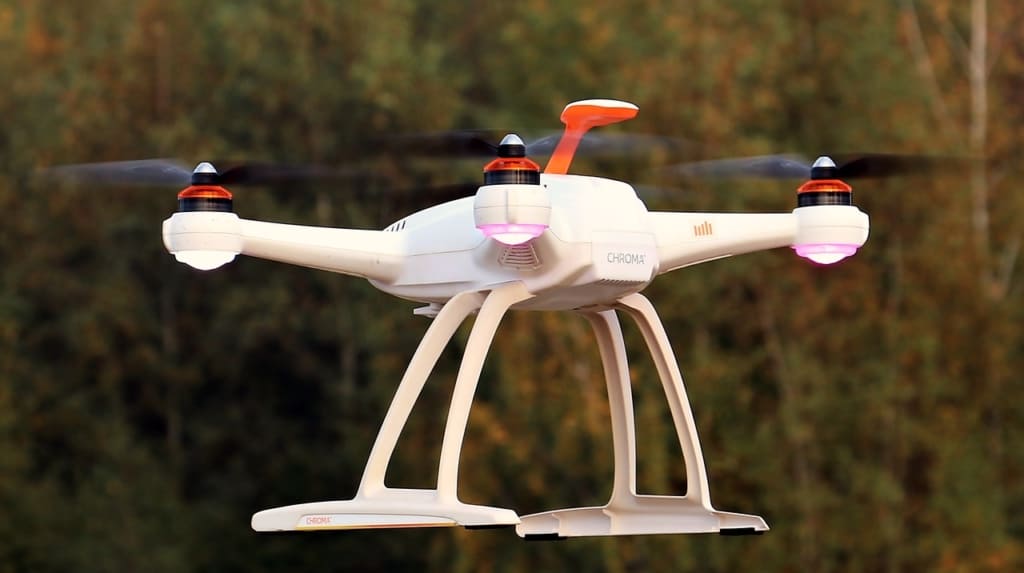In recent times, the drone industry has been buzzing with stories of these aerial wonders aiding in the fight against wildfires.
How drone are help us cope with wildfires?
This year, Canada has experienced an unprecedented surge in devastating wildfires, with vast stretches of land engulfed in flames and communities facing unprecedented challenges. In the face of this crisis, one technological marvel has emerged as a critical asset in the fight against these raging infernos: drones. These aerial wonders have proven to be invaluable tools in mitigating the wildfire’s impact and aiding first responders. In this article, we will delve into the intricate workings of drones in these critical scenarios, shedding light on the behind-the-scenes action that goes into providing drone services in emergency and disaster environments. From training and certification to the cutting-edge technology employed during operations and the data processing that follows, we’ll explore how drones are making a difference in combating the wildfires.
Safety First
First and foremost, it’s essential to emphasize a fundamental fact: the unauthorized operation of drones in disaster or emergency zones is illegal. While drones hold immense potential, unregulated flights in these areas pose a significant threat to manned aircraft operations and can hinder the crucial work of first responders. Proper training and certification are of paramount importance, and authorized agencies strictly adhere to these regulations when undertaking such missions. All our operations are carried out with official authorization and unwavering compliance with these rules.
Perhaps you own a drone and are eager to contribute by offering your services. However, it’s crucial to understand that proficiency in drone piloting alone is insufficient when it comes to providing meaningful assistance to emergency response agencies. Consider the extensive training and certification that the Candrone wildfire drone crew undergoes before they are even considered for deployment. Continue reading to learn how you can become part of this impactful endeavor.
The diverse skillset required includes:
- First Aid and Transportation Endorsement: Foundational knowledge in emergency medical care combined with transportation skills.
- Fire Weather Understanding: In-depth comprehension of the complex dynamics of fire conditions.
- Effective Radio Communication: The ability to communicate clearly and efficiently, including the expertise to summon helicopter evacuation if circumstances escalate.
- Basic Fire Suppression Techniques: Proficiency in setting up pumps, hoses, and employing effective hosing methods.
- Fire Entrapment Training: Preparedness for scenarios where escape routes are compromised.
- Advanced RPAS (Remotely Piloted Aircraft System) Pilot Certificate: Mastery in operating remote pilot aircraft systems.
- ROC-A (Radio Operator Certificate – Aeronautical): Certification for aeronautical radio operation.
- SFOC (Special Flight Operations Certificate) Application: Mandatory for operations above 400 feet and beyond the visual line of sight.
Fulfilling these prerequisites demands several weeks of dedicated effort, substantial time, and financial investment. In addition to advanced drone technology, a wide range of ancillary equipment and supplies, including camping gear, generators, approved vehicles, fire suppression equipment, survival gear, personal protective equipment (PPE), and sustenance such as Meals Ready to Eat (MREs), are essential components of the toolkit.
How firefighters use drone in term of mitigrate wildfire?
Firefighting teams frequently employ thermal drones, alternatively referred to as thermal imaging drones or drones equipped with thermal cameras. These highly specialized drones are outfitted with advanced thermal sensors designed to detect and capture the infrared radiation emitted by various objects, including fires. These thermal sensors play a pivotal role in enhancing firefighting efforts by providing invaluable insights into the heat signatures and temperature variations associated with the fire and its surroundings. This technology enables firefighters to pinpoint the hottest spots, monitor fire progression, and identify potential hotspots that may not be visible to the naked eye, ultimately aiding in more effective fire suppression strategies and reducing the risks faced by first responders.
In summary, the utilization of drones in wildfire suppression efforts is a highly complex and regulated process that demands rigorous training, state-of-the-art equipment, and meticulous planning. The data collected by these drones is invaluable in effectively combatting wildfires and protecting communities. As technology continues to advance, the role of drones in emergency and disaster scenarios will only become more significant, saving lives and property in the process.

